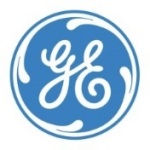- Artificial intelligence (AI) and healthcare access remain key themes at ISMRM as researchers and clinicians seek more efficient and effective solutions in today’s resource-constrained environment
- GE Healthcare highlights the continued expansion of its state-of-the-art AIR Recon DL technology across the totality of its 1.5T, 3.0T and 7.0T MR product portfolio
- Already, this democratization of AI has benefitted more than two million patients around the world and fundamentally shifted the balance between image quality and scan time in MR

CHICAGO & CHALFONT ST GILES, England–(BUSINESS WIRE)–At the International Society for Magnetic Resonance in Medicine (ISMRM) 2022 Annual Meeting, GE Healthcare boasts the continued expansion of its pioneering deep learning image reconstruction solution, AIR Recon DL, to its tens of thousands of install base customers as an upgrade as well as with new purchases across its MR product portfolio. This marks a significant moment in the democratization of artificial intelligence (AI) and deep learning for the benefit of healthcare systems and patients around the world.
Imaging more than 200 million patients in 2021i, MR plays an increasingly important role in precision diagnostics, helping clinicians detect neurodegenerative diseases, cancer, heart conditions, and other diseases large and small. However, discrepancies in access to certain MR advancements can have a significant impact on the availability and quality of care clinicians can deliver to patients.
Since we first saw the power of our AI-based deep learning image reconstruction technology, AIR Recon DL, we knew it could have a massive clinical impact. So, we went all in,” says Jie Xue, President & CEO, Magnetic Resonance, GE Healthcare. “We developed it for all anatomies; we made it work on all field strengths – 1.5T, 3.0T and 7.0T – and most importantly, we made it available not only on our latest scanner models, but also on all our installed GE MR scanners dating back 20+ years. From first time MR users to experienced MR researchers, we want every GE MR customer – regardless of their scanner’s age – to benefit from today’s groundbreaking AI-based technology.
To date, AIR Recon DL has benefitted more than two million patients around the world, with overwhelmingly positive feedback from clinicians, who celebrate sharper and less noisy images for a more confident patient diagnosis as well as up to a 50% reduction in exam times for a more comfortable patient experienceii. To build on this success, GE Healthcare announced the continued expansion of AIR Recon DL, which was developed on GE Healthcare’s Edison intelligence platform, to include the motion-insensitive sequence PROPELLER and 3D applicationsiii. With this expansion, AIR Recon DL covers nearly 90 percent of clinical MR sequences, regardless of the anatomy being scanned.
These advancements have proved especially valuable for those who struggle to remain still during MR exams, such as pediatric, neurodegenerative and geriatric patients. Dr. Shreyas Vasanawala, Chief of Pediatric Radiology & Director of MRI, Lucile Packard Children’s Hospital at Stanford shares: “Patients don’t necessarily know that this feature is being turned on or off. But they wind up just seeing that their appointment has gone quicker, and for a lot of children we’re just able to get the scan done before they’ve reached their limit of cooperation.”
In addition to a faster and more comfortable patient experience, AIR Recon DL helps to provide more confident patient diagnosis. Dr. Hollis Potter, Chair of Radiology, Hospital for Special Surgery comments: “There is more detail in the image, especially at a lower matrix. In some conventionally processed MR images, the trabecular bone pattern is poor, the nerves are blurred and there is a lot of noise in the image. With AIR Recon DL, the difference is striking.”
AIR Recon DL offers greater efficiency to healthcare systems. The AI-based algorithm has been the subject of more than 12 international, peer-reviewed scientific journal publications covering various anatomies, with conclusions underlining the reliability, efficiency, and utility of deep learning-based enhancement for quantitative imaging across care pathways. Radiology departments today continue to face multiple challenges – including increased workload demands due to a backlog of cases resulting from COVID-19, steadily growing patient volumes, and industry-wide staff shortages and burnoutiv,v. As a result, there is clear need for broad access to MR clinical solutions that can reduce time-to-diagnosis, improve patient throughput, and enhance the patient and staff experience.
To this end, GE Healthcare is proud to showcase more than a dozen additional innovative MR solutions at ISMRM to help clinicians tackle today’s challenging healthcare demands while also improving access and providing more personalized, quality care. This includes several solutions developed to help provide precision healthcare to even the most challenging patients:
Prostate Cancer Patients: Prostate cancer is the second most commonly occurring cancer in men and the fourth most common cancer overallvi. While traditional prostate imaging exams can be uncomfortably invasive and complex, AIR Coils are lightweight and flexible, closely wrapping around patients, like a blanket, and offering incredible image quality. Combined with AIR Recon DL, AIR Coils push the limit on signal-to-noise ratio (SNR) and sharpness with 50% less scan time while meeting PI-RADS standards for a faster, more comfortable and less invasive patient experience.
Pregnant Mothers & Children: As an alternative when ionizing radiation is a concern, GE Healthcare offers oZTEo, an MR bone imaging solution that provides CT-like image contrast for both soft tissue assessment and bone imaging within the same exam. This can lessen the burden on the patient to attend two separate imaging modality appointments and may also lead to reduced healthcare costs.
Neurodegenerative Patients: Individuals with neurodegenerative disorders – such as Alzheimer’s, Huntington’s or Parkinson’s Disease – often struggle to remain still during lengthier exams. In response, GE Healthcare designed its proprietary MotionFree Brainvii on its SIGNA PET/MR to provide significant improvement in quantitative accuracy – especially for small brain lesions – and a more comfortable scanning experience for patients.
Claustrophobic & Obese Patients: For larger sized patients or those who struggle with claustrophobia, GE Healthcare offers SIGNA Evoviii, which is designed to enable healthcare systems to transform their legacy 3.0T and 1.5T 60 cm narrow bore MR systems to premium, state-of-the-art 3.0T and 1.5T, 70 cm wide bore systems – helping them accommodate more patients of all shapes and sizes. For healthcare systems, this solution also would transform the existing system’s magnet, with the goal of enabling 40 percent faster return on investment (ROI) potential over replacing the whole systemix.
Altogether, GE Healthcare is proud to usher in ‘A Bold New World in MR’ – one which is focused on the development and increased availability of innovative technologies and solutions to MR users for the benefit of clinicians and patients around the world.
For more information on GE Healthcare’s MR portfolio, see gehealthcare.com or visit the company’s #ISMRM22 booth or virtual platform.
About GE Healthcare:
GE Healthcare is the $17.7 billion healthcare business of GE (NYSE: GE). As a leading global medical technology, pharmaceutical diagnostics and digital solutions innovator, GE Healthcare enables clinicians to make faster, more informed decisions through intelligent devices, data analytics, applications, and services, supported by its Edison intelligence platform. With over 100 years of healthcare industry experience and around 48,000 employees globally, the company operates at the center of an ecosystem working toward precision health, digitizing healthcare, helping drive productivity and improve outcomes for patients, providers, health systems and researchers around the world.
Follow us on Facebook, LinkedIn, Twitter, and Insights for the latest news, or visit our website www.gehealthcare.com for more information.
i “Global Procedure Volumes and Reimbursement for MRI Equipment Growth Opportunities: Portable Point-of-Care Systems and Increase in Cardiac and Neuro Imaging Accelerated MRI Procedures across Regions.” Frost & Sullivan. Published February 2022. PCB7-50.
ii GE Healthcare data on file
iii AIR Recon DL 3D and PROPELLER is 510(k) pending at the FDA. Not CE marked. Not available for sale in the United States or EU. Not commercially available in all markets.
iv Gleeson, Cailey. “Healthcare staff shortages project for every state by 2026.” Becker’s Hospital Review. Published 29 September 2021. Accessed 24 November 2021. https://www.beckershospitalreview.com/workforce/healthcare-staff-shortages-projected-for-every-state-by-2026-4-report-findings.html
v Levine, David. “U.S. Faces Crisis of Burned-Out Health Care Workers.” U.S. News & World Report. Published 15 November 2021. Accessed 24 November 2021. https://www.usnews.com/news/health-news/articles/2021-11-15/us-faces-crisis-of-burned-out-health-care-workers
vi “Prostate Cancer Statistics.” World Cancer Research Fund International. Accessed 2 May 2022. https://www.wcrf.org/cancer-trends/prostate-cancer-statistics/
vii MotionFree Brain is not CE Marked. May not be placed on market nor put into service before it complies with CE marking. Not commercially available in all markets.
viii SIGNA Artist Evo is not yet CE Marked. May not be placed on market nor put into service before it complies with CE marking. Not commercially available in all markets.
ix Based on historical ROI of full system upgrades vs. full replacement.
Contacts
Media Contacts:
Margaret Steinhafel
Chicago
Margaret.Steinhafel@ge.com
+1 608 381 8829



